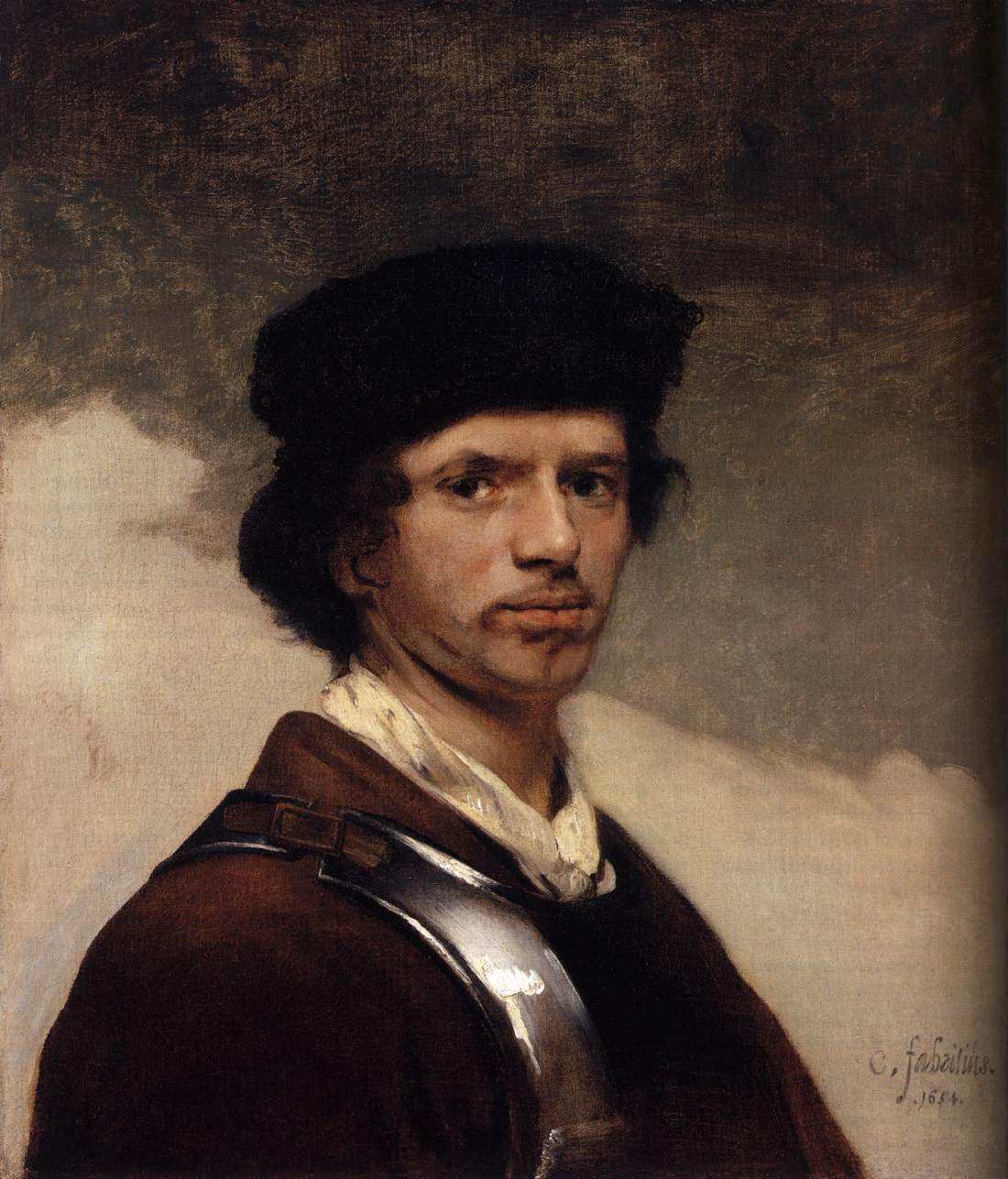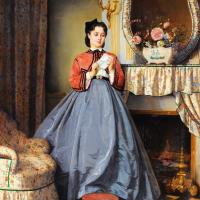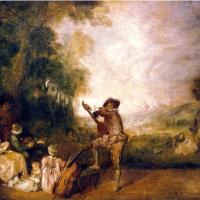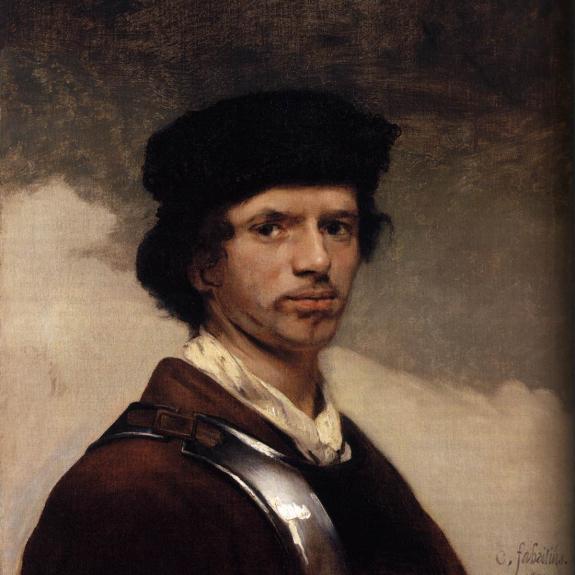Jan Vermeer
The Concert
$480.00
Jan Vermeer
Johannes Vermeer (1632-1675)
Johannes Vermeer (October 1632 – December 1675) was a Dutch Baroque Period painter who specialized in domestic interior scenes of middle-class life. He was a moderately successful provincial genre painter in his lifetime but evidently was not wealthy, leaving his wife and children in debt at his death, perhaps because he produced relatively few paintings.

Vermeer worked slowly and with great care, and frequently used very expensive pigments. He is particularly renowned for his masterly treatment and use of light in his work.
Vermeer painted mostly domestic interior scenes. "Almost all his paintings are apparently set in two smallish rooms in his house in Delft; they show the same furniture and decorations in various arrangements and they often portray the same people, mostly women."

Girl with a Pearl Earring (1665), considered a Vermeer masterpiece
He was recognized during his lifetime in Delft and The Hague, but his modest celebrity gave way to obscurity after his death. He was barely mentioned in Arnold Houbraken's major source book on 17th-century Dutch painting (Grand Theatre of Dutch Painters and Women Artists), and was thus omitted from subsequent surveys of Dutch art for nearly two centuries. In the 19th century, Vermeer was rediscovered by Gustav Friedrich Waagen and Théophile Thoré-Bürger, who published an essay attributing 66 pictures to him, although only 34 paintings are universally attributed to him today. Since that time, Vermeer's reputation has grown, and he is now acknowledged as one of the greatest painters of the Dutch Golden Age. Like some major Dutch Golden Age artists such as Frans Hals and Rembrandt, Vermeer never went abroad. And like Rembrandt, he was an avid art collector and dealer.
Vermeer may have first executed his paintings tonally like most painters of his time, using either monochrome shades of grey ("grisaille") or a limited palette of browns and greys ("dead coloring"), over which he would apply more saturated colors (reds, yellows and blues) in the form of transparent glazes. No drawings have been positively attributed to Vermeer, and his paintings offer few clues to preparatory methods.
There is no other 17th-century artist who employed the exorbitantly expensive pigment lapis lazuli (natural ultramarine) either so lavishly or so early in his career. Vermeer used this in not just elements that are naturally of this colour; the earth colours umber and ochre should be understood as warm light within a painting's strongly lit interior, which reflects its multiple colours onto the wall. In this way, he created a world more perfect than any he had witnessed. This working method most probably was inspired by Vermeer’s understanding of Leonardo’s observations that the surface of every object partakes of the colour of the adjacent object. This means that no object is ever seen entirely in its natural colour.
A comparable but even more remarkable, yet effectual, use of natural ultramarine is in The Girl with the Wine Glass. The shadows of the red satin dress are underpainted in natural ultramarine, and, owing to this underlying blue paint layer, the red lake and vermilionmixture applied over it acquires a slightly purple, cool and crisp appearance that is most powerful.
Even after Vermeer’s supposed financial breakdown following the so-called rampjaar (year of disaster) in 1672, he continued to employ natural ultramarine generously, such as in Lady Seated at a Virginal. This could suggest that Vermeer was supplied with materials by a collector, and would coincide with John Michael Montias’ theory that Pieter van Ruijven was Vermeer’s patron.
Vermeer's works are largely genre pieces and portraits, with the exception of two cityscapes and two allegories. His subjects offer a cross-section of seventeenth-century Dutch society, ranging from the portrayal of a simple milkmaid at work, to the luxury and splendour of rich notables and merchantmen in their roomy houses. Besides these subjects, religious, poetical, musical, and scientific comments can also be found in his work.
One aspect of his meticulous painting technique was Vermeer's choice of pigments. He is best known for his frequent use of the very expensive ultramarine (The Milkmaid), and also lead-tin-yellow (A Lady Writing a Letter), madder lake (Christ in the House of Martha and Mary), and vermilion. He also painted with ochres, bone black and azurite. The claim that he utilized Indian yellow in Woman Holding a Balance[36] has been disproven by later pigment analysis.
In Vermeer’s oeuvre, only about 20 pigments have been detected. Of these 20 pigments, seven principal pigments which Vermeer commonly employed include lead white, yellow ochre, vermilion, madder lake, green earth, raw umber, and ivory or bone black.
Vermeer's works were largely overlooked by art historians for two centuries after his death. A select number of connoisseurs in the Netherlands did appreciate his work, yet even so, many of his works were attributed to better-known artists such as Metsuor Mieris. The Delft master's modern rediscovery began about 1860, when German museum director Gustav Waagen saw The Art of Painting in the Czernin gallery in Vienna and recognized the work as a Vermeer, though it was attributed to Pieter de Hooch at that time. Research by Théophile Thoré-Bürger culminated in the publication of his catalogue raisonné of Vermeer's works in the Gazette des Beaux-Arts in 1866. Thoré-Bürger's catalogue drew international attention to Vermeer and listed more than 70 works by him, including many that he regarded as uncertain. The accepted number of Vermeer's paintings today is 34.
Upon the rediscovery of Vermeer's work, several prominent Dutch artists modelled their style on his work, including Simon Duiker. Other artists who were inspired by Vermeer include Danish painter Wilhelm Hammershoi and American Thomas Wilmer Dewing. In the 20th century, Vermeer's admirers included Salvador Dalí, who painted his own version of The Lacemaker (on commission from collector Robert Lehman) and pitted large copies of the original against a rhinoceros in some surrealist experiments. Dali also immortalized the Dutch Master in The Ghost of Vermeer of Delft Which Can Be Used As a Table, 1934.
Han van Meegeren was a 20th-century Dutch painter who worked in the classical tradition. He became a master forger, motivated by a blend of aesthetic and financial reasons, creating and selling many new "Vermeers" before being caught and tried.
On the evening of 23 September 1971, a 21-year-old hotel waiter, Mario Pierre Roymans, stole Vermeer's Love Letter from the Fine Arts Palace in Brussels where it was on loan from the Rijksmuseum as a part of the Rembrandt and his Age exhibition.
source: wiki




